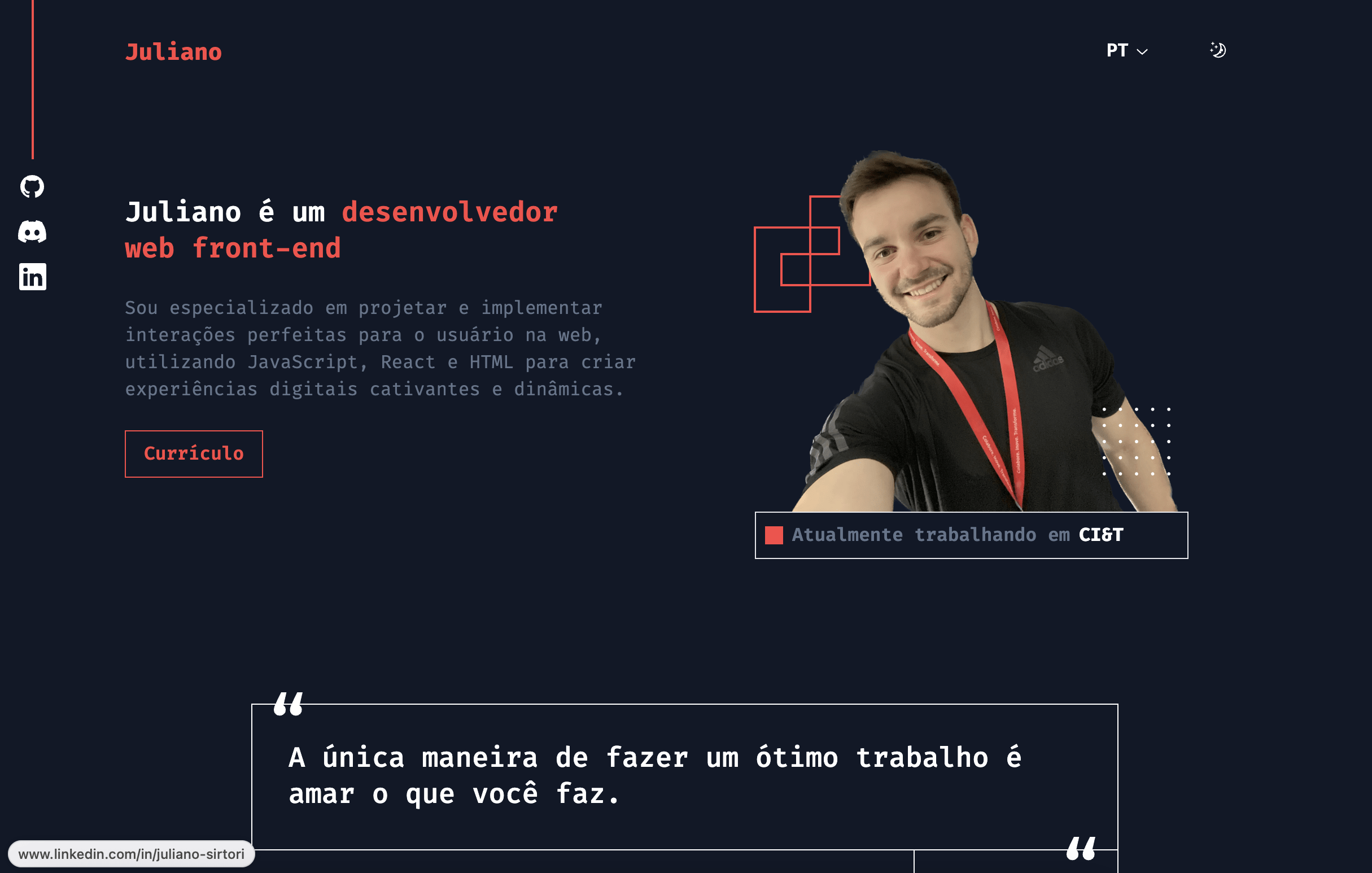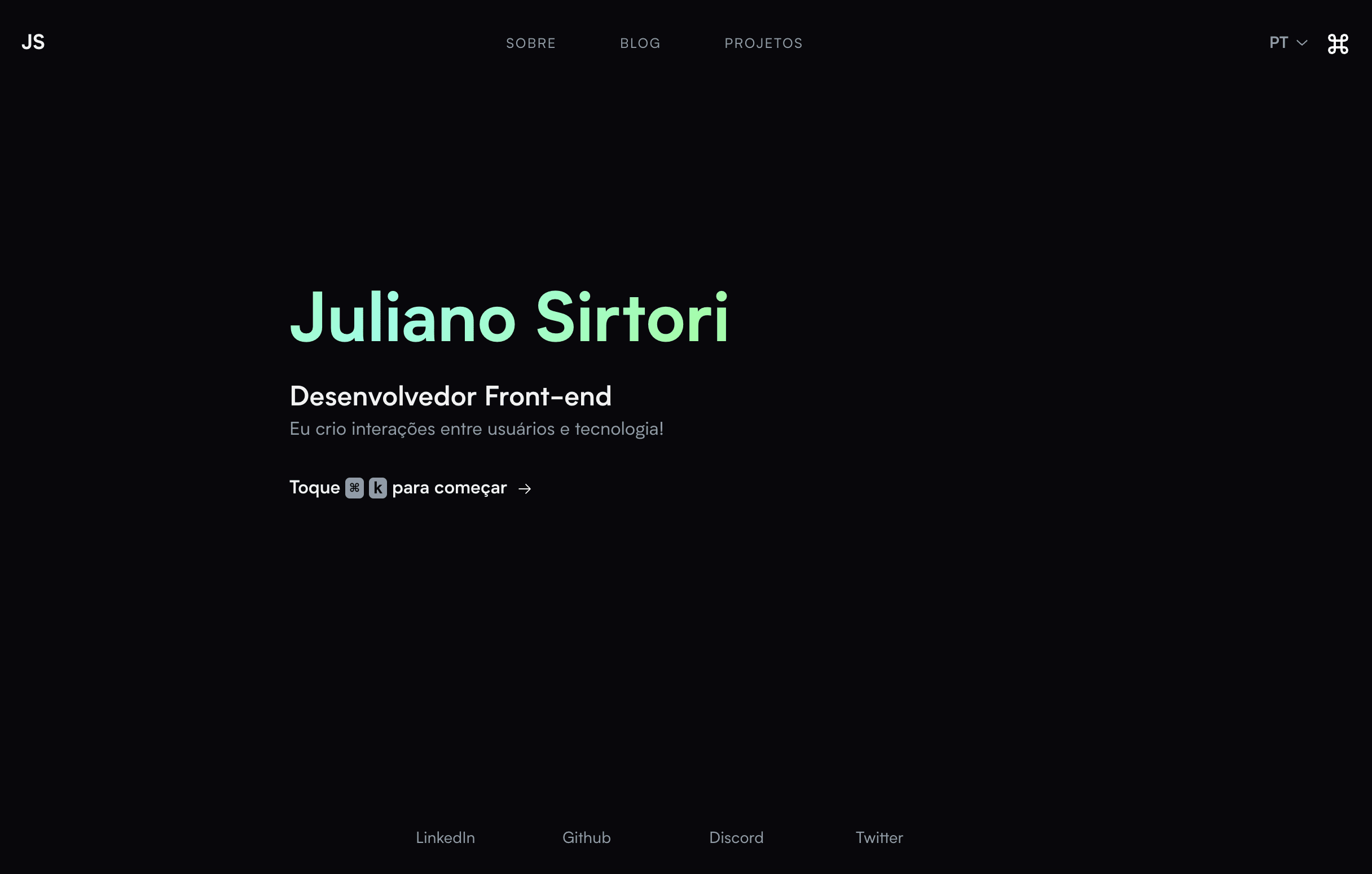One of my goals for the year 2023 was to finally implement my blog. I had been wanting to create one for a while to improve and expand my online presence. Fortunately, I managed to overcome procrastination and finally completed it.
In this article, I will detail the development and design process, the libraries I used for implementation, and the next steps. If you wish to examine the code, you can access it on my GitHub: https://github.com/julianosirtori/julianosirtori.dev
Design
I believe the most challenging part of this project was defining the design. Initially, I had in mind a concept with many animations and impressive visual effects. However, after analyzing some references in the field, such as the website https://kentcdodds.com and https://leerob.io, I opted for a simpler approach.
First Version
I managed to implement a first version of the design, which is presented below:
I wasn't very satisfied with the result; I thought the screen looked somewhat cluttered. I was looking for something simpler and more minimalist.
Second Version
I came across the website of Zeno Rocha, liked his design a lot, and ended up replicating both the layout and the structure of his blog, making only a few minor adjustments.
In the future, I plan to make some changes to customize the blog according to my style, but at this early stage, I am quite satisfied with the result.
Technology Stack Used
As for the technology used, I opted for a stack composed of the following options:
-
Next.js 13: I chose Next.js due to my familiarity with it and took the opportunity to test the new features of version 13.
-
Tailwind CSS: This is my first project using Tailwind CSS. The learning curve is a bit steep, but the use of extensions for VSCode has been very helpful. I am pleased with the results and plan to use Tailwind CSS in future projects.
-
Contentlayer: To transform my files, which are in Markdown format, into data, similar to a CMS, I chose to use Contentlayer. The integration was quite easy, and it wasn't necessary to set up any additional CMS services. Additionally, it provides type safety for my articles.
-
Next-intl: As you can see, my blog offers the option to choose between English and Portuguese. To implement this internationalization, I used Next-intl, opting for a beta version due to the use of server components and the app router.
-
Resend: I also chose Resend as my email service. I had never used it before, but I found the integration quite easy to perform.
-
Vercel: As for the infrastructure, I chose to use Vercel.
Future Improvements
On GitHub, I have mapped out some improvements that I plan to implement, such as the integration of end-to-end tests, the creation of pipelines for CI/CD, and the replacement of kbar with cmdk.
In addition to the topics mentioned above, I plan to make some changes to the layout by adding transition animations and exploring the inclusion of more images to enrich articles and projects.
Writing Habit
I intend to cultivate the habit of writing, which will help me better solidify the content I learn and strengthen my online presence. I'm documenting this here so that you can hold me accountable later. My intention is to publish one article per week.
Conclusion
The project is open-source under the MIT license, so feel free to clone it, open issues, or submit pull requests.
THAT'S ALL FOLKS

